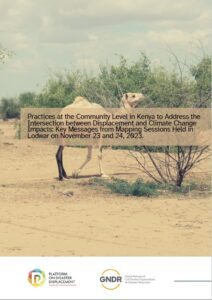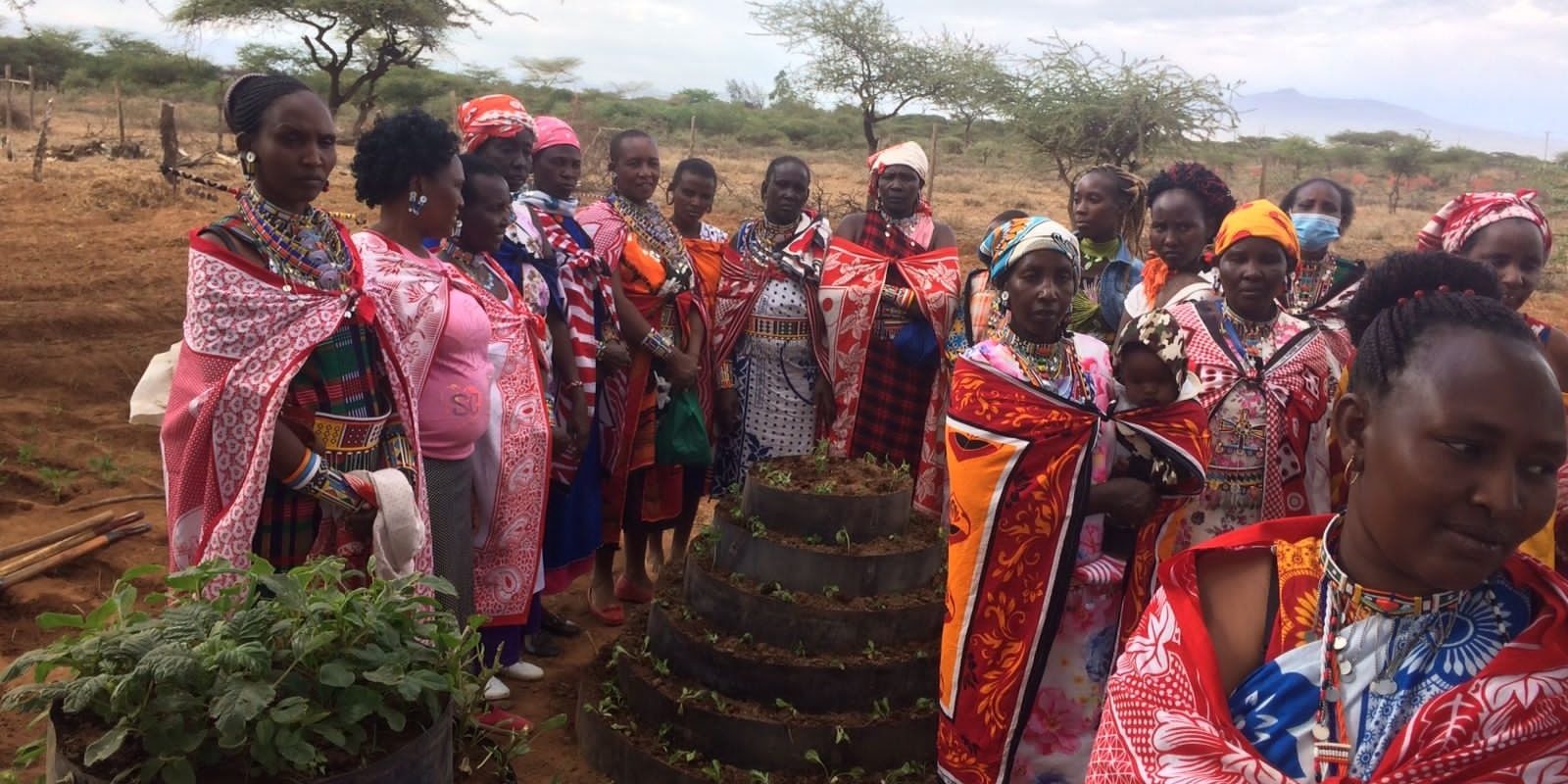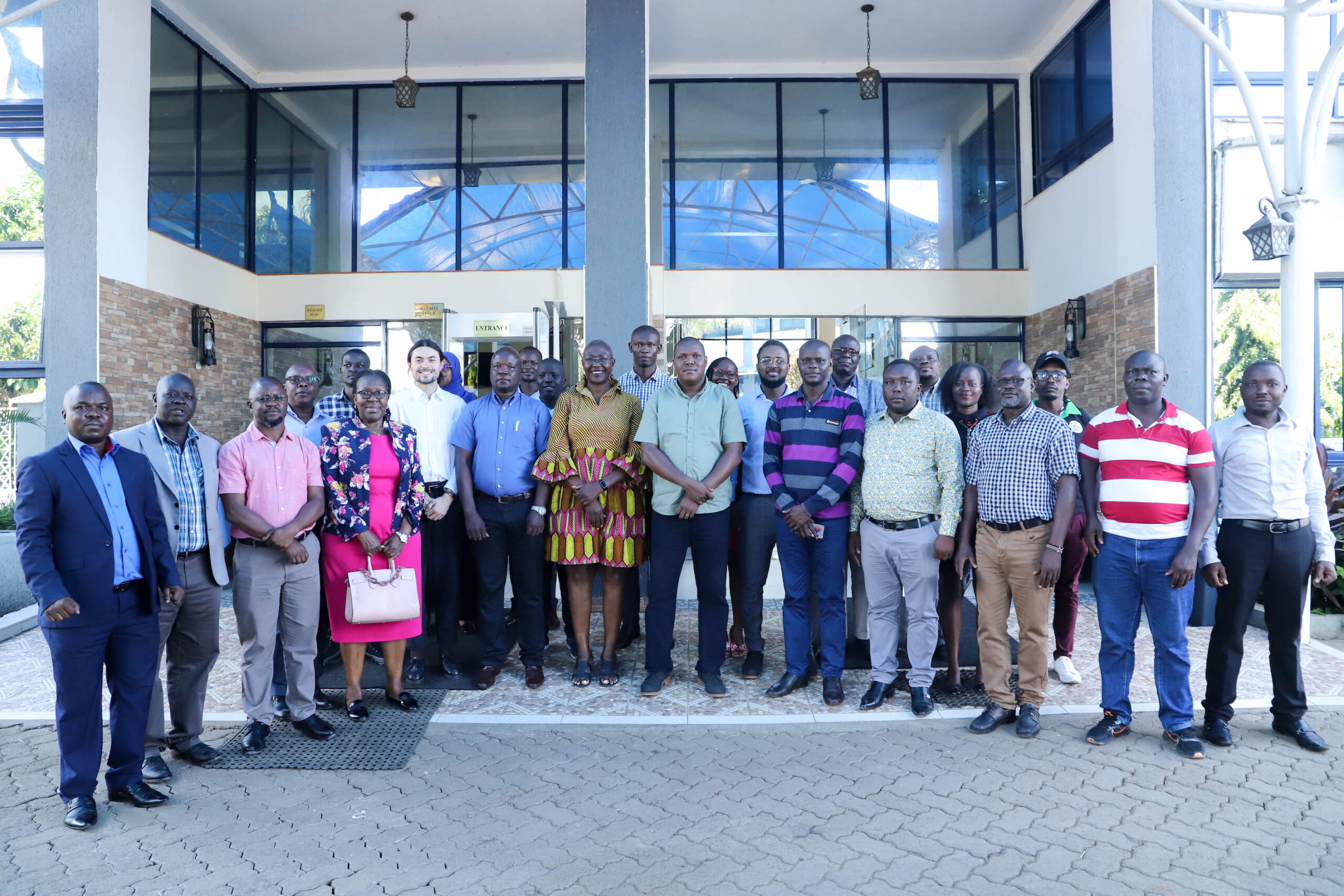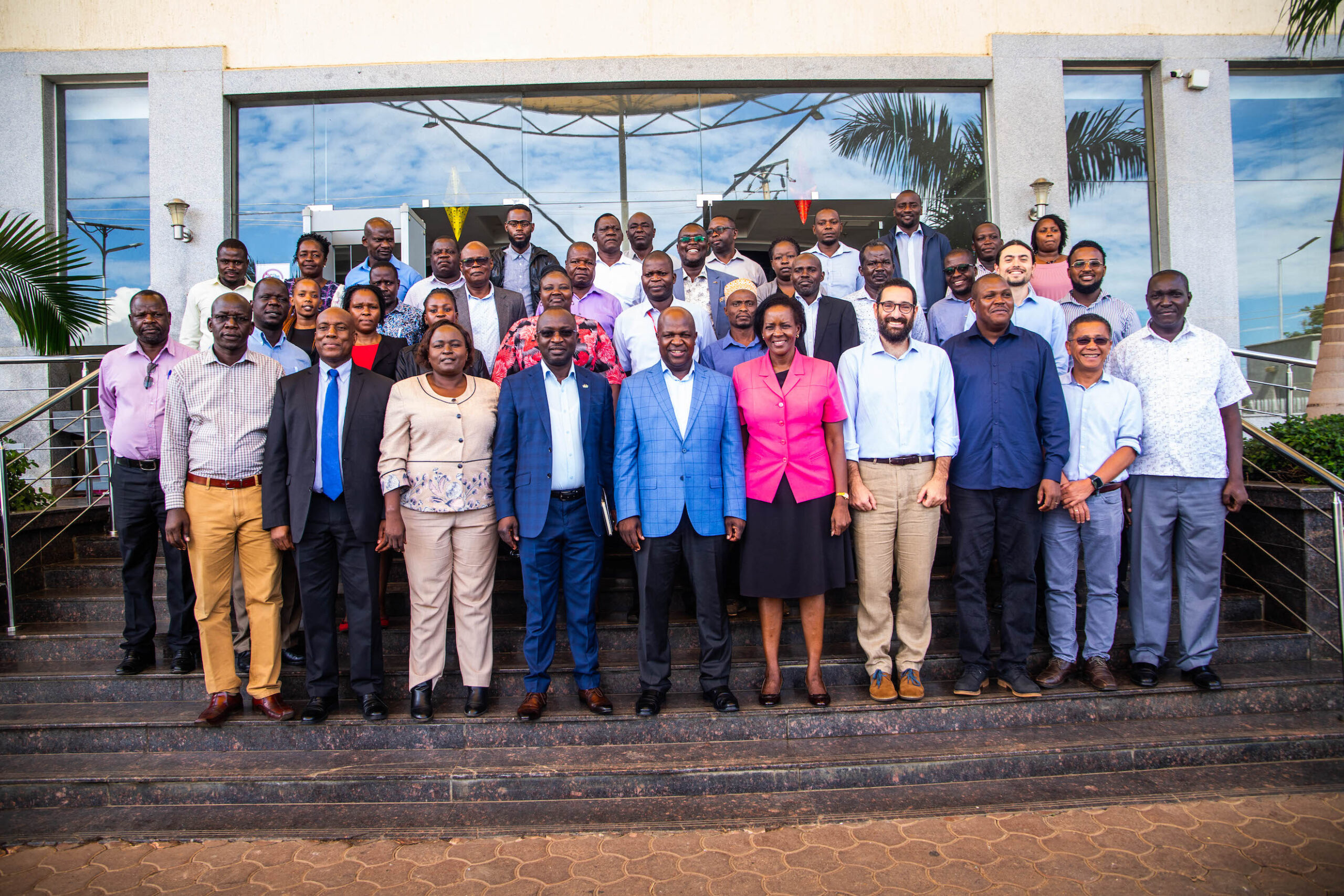Since August 2023, the Platform on Disaster Displacement (PDD) and the Global Network of Civil…
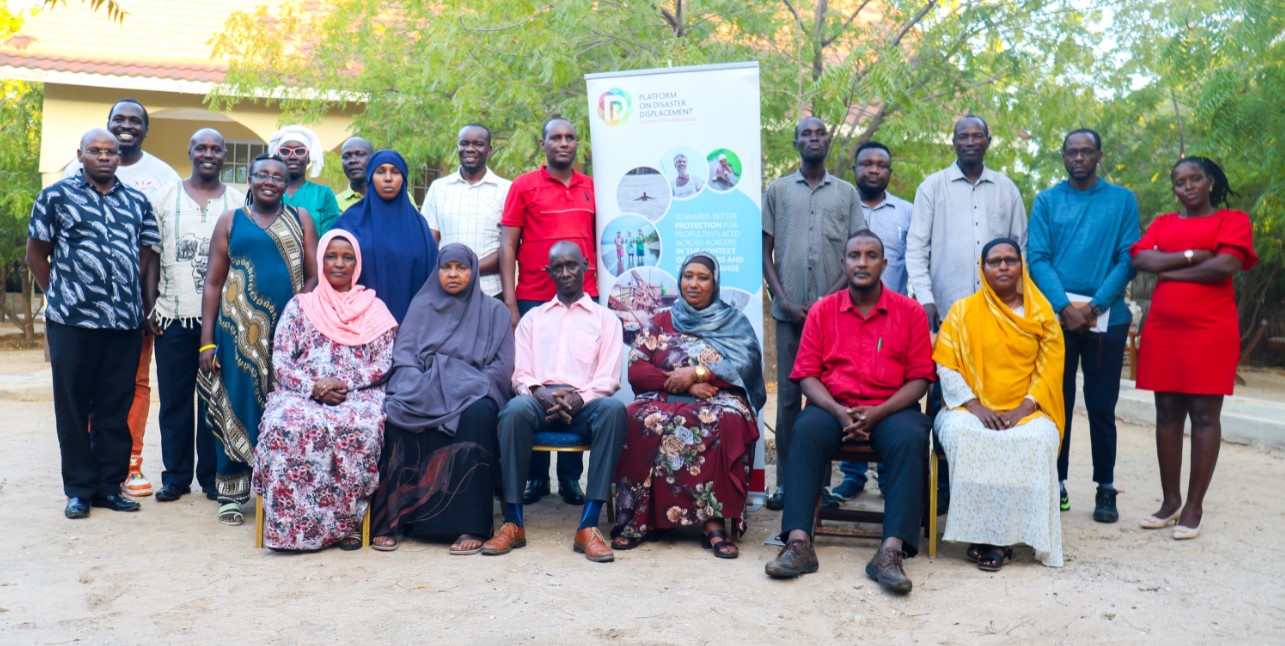
Practices from Kenya – Mobilizing Communities to Address Displacement in ASAL areas
On November 23 and 24, the Platform on Disaster Displacement (PDD) and the Global Network of Civil Society Organizations for Disaster Reduction (GNDR) invited representatives of community-based organizations from across Arid and Semi-Arid Areas from Northern Kenya to Lodwar, Turkana, to share their experiences and coordinate their work.
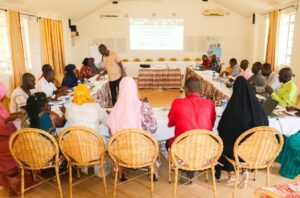 ASAL areas in Northern Kenya have been severely affected by droughts over the last years, with progressive impacts on people’s livelihoods and health, and their communities’ integrity. Many drought-affected people have moved away from their homes, seeking for new income opportunities. Many pastorlists have shifted their traditional transhumance patterns, looking for water and pasture. Many migrants and refugees arrived into Kenya from neigbhoring countries have also been affected, with limited resources and opportunities to cope with these impacts. While recent rains have somewhat mitigated the situation, many parts of the area are now facing flooding, including as a consequence of the effects of a strong El Nino.
ASAL areas in Northern Kenya have been severely affected by droughts over the last years, with progressive impacts on people’s livelihoods and health, and their communities’ integrity. Many drought-affected people have moved away from their homes, seeking for new income opportunities. Many pastorlists have shifted their traditional transhumance patterns, looking for water and pasture. Many migrants and refugees arrived into Kenya from neigbhoring countries have also been affected, with limited resources and opportunities to cope with these impacts. While recent rains have somewhat mitigated the situation, many parts of the area are now facing flooding, including as a consequence of the effects of a strong El Nino.
The consultation brought together representatives from 20 community-based organizations from Marsabit, Garissa, Turkana, Wajir, West Pokot, and Isiolo Counties. The event provided an opportunity to present work that is ongoing at community level to address displacement in the context of disasters and the impacts of climate change. Local community leaders and practitioners could exchange on impacts, responses and challenges in their areas of work, and learn about effective approaches that are being adopted in other ASAL areas.
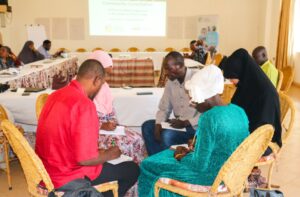 8 key issues emerged from the consultation
8 key issues emerged from the consultation
- Enhanced Preparedness for Displacement in the context of Climate Change
In ASAL areas suffering heavy loss and damage due to climate change, including resulting displacement, strengthening immediate response capability at community level is crucial, as shown recently by the heavy rains that recently hit Garissa, Wajir, and Isiolo Counties. - Empowering Women in ASAL Communities to Address Displacement
Women are increasingly accessing positions of power in ASAL areas in Kenya, as shown by the election of women as Members of the County Assembly in Wajir and Isiolo Counties during the 2022 general elections. This progressive empowerment need to translate at all levels in increasing involvement and decision-making power related to all interventions to avert, minimise and address displacement. - Rainwater Harvesting for Climate Resilience and Reduced Loss
In order to combat the impacts of climate change on water availability and subsequent displacement, an increasing number of families and communities in ASAL counties are embracing the installation of underground water tanks for rainwater collection. These tanks provide a dependable, self-sustaining water source, reducing the challenges posed by irregular rainfall patterns and water scarcity. Local solutions like this can improve the day-to-day lives of people living on the frontlines of climate change, addressing the conditions that can lead to displacement. - Building Inter-Communal Peace and Resilience
Amidst displacement and climate-relate resource conflicts, “mini-exchange programs” between neighboring pastoralist communities are proving instrumental in promoting peace and resilience. These programs facilitate cross-cultural understanding among school-going youth, contributing directly to peace-building efforts and reducing displacement and loss resulting from intercommunity conflicts.  Protecting Girls and Preventing Early Marriage in Times of Climate Crisis
Protecting Girls and Preventing Early Marriage in Times of Climate Crisis
Promoting the protection of the rights of girls is key to reducing loss and damage, including displacement and its impacts, in ASAL households. Education and well-being initiatives specifically targeted to girls reduce the need for early marriages driven by resource scarcity, preventing acute short and long-term impacts on the well-being of girls – in particular those experiencing displacement and related deprivation.- Cultural Alternatives as a way to Avert, Minimise and Address Impacts
Communities in ASAL areas are increasingly embracing alternatives to traditional practices like Female Genital Mutilation. These alternatives focus on providing essential life skills to girls in remote locations before they transition into adulthood and marriage. These interventions also foster climate resilience, reducing impacts, including displacement and associated losses, for this specific group, for their whole families and communities. - Addressing Resource-Induced Gender-based Violence Amidst Climate Change
Climate change exacerbates resource scarcity in ASALs, leading to heightened tensions and an increased risk of GBV, particularly for women who depend on dwindling natural resources for their livelihoods or to contribute to their household’s wellbeing. Implementing measures to reduce resource-related GBV directly contributes to preventing additional loss and damage within these communities. Technology is playing a transformative role in addressing these issues: smartphone apps now allow women to confidentially report GBV cases and quickly alert authorities about suspected banditry activities. This gives women through increased access to prevention, mitigation and protection options, and help target responses.

 Protecting Girls and Preventing Early Marriage in Times of Climate Crisis
Protecting Girls and Preventing Early Marriage in Times of Climate Crisis